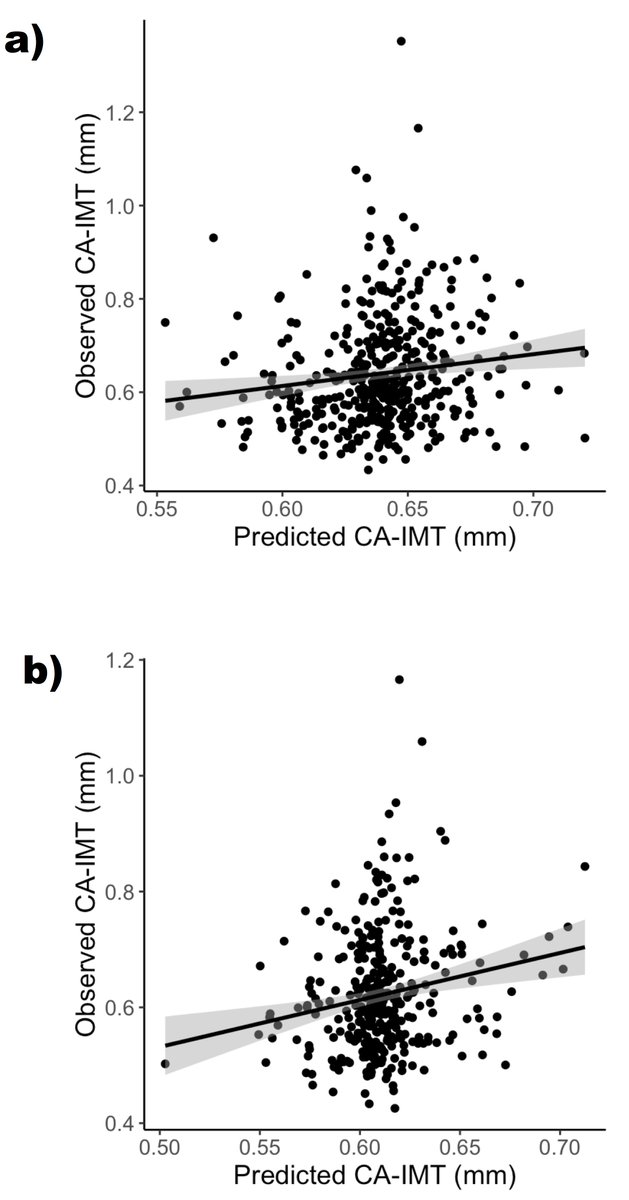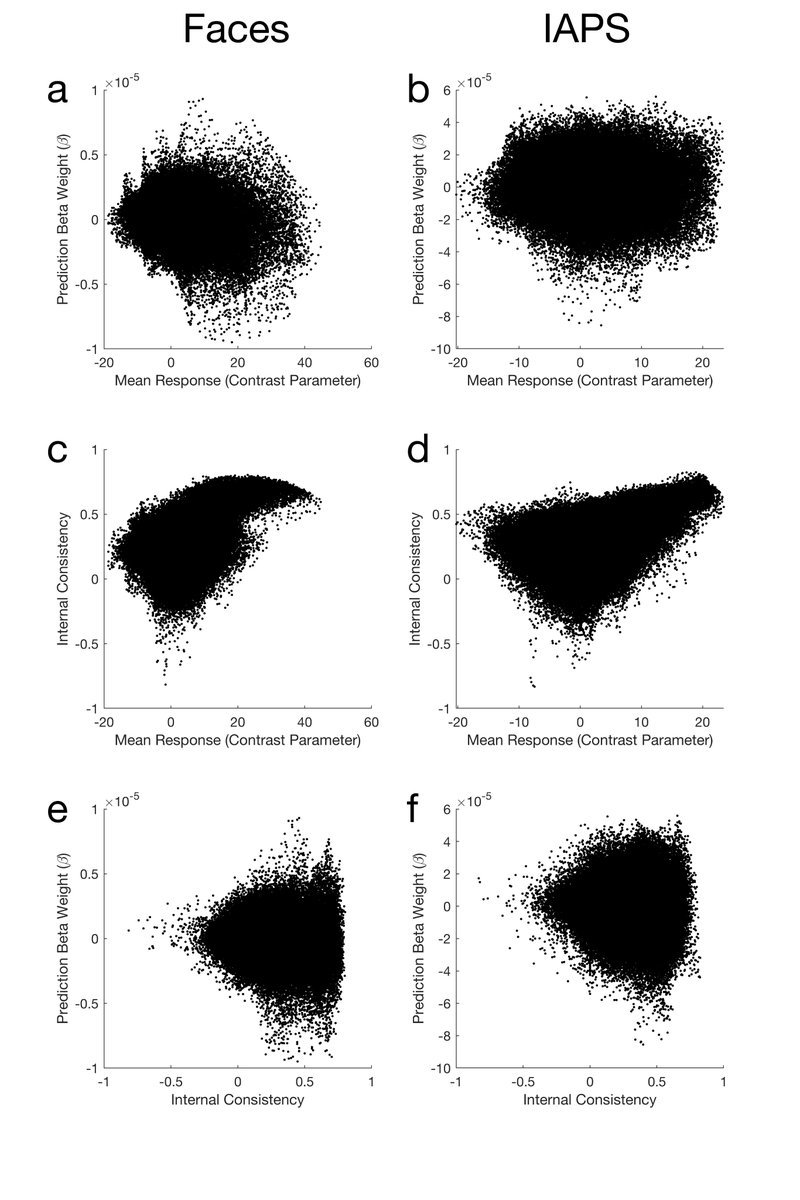Our group’s latest paper is now published (open access) in SCAN: “Affective brain patterns as multivariate neural correlates of cardiovascular disease risk” https://doi.org/10.1093/scan/nsaa050">https://doi.org/10.1093/s... Short thread: (1/10)
We are interested in brain systems that link stress and negative affect to cardiovascular disease (CVD) risk. Here’s a short review on the topic: https://twitter.com/tekraynak/status/1050741226713096192">https://twitter.com/tekraynak... (2/10)
Prior research on the neural correlates of negative affect and CVD risk primarily used mass-univariate or region-of-interest analyses, which doesn’t tell us to what extent brain phenotypes of negative affect will cross-sectionally predict CVD risk in new participants. (3/10)
We used machine-learning to test whether individual differences in an indicator of midlife preclinical CVD risk (carotid artery intima-media thickness; CA-IMT) are reliably predicted by distributed brain activity patterns evoked by 3 tasks involving negative affect. (4/10)
2 tasks were emotional face matching tasks and 1 task involved passive viewing of negative IAPS images. Participants were combined from 2 community samples of midlife adults (age 30-54). Sample sizes ranged from 338 to 450 participants depending on the task. (5/10)
LASSO-PCR with nested cross-validation showed that CA-IMT was partially predicted by 1 face matching task as well as the IAPS task. Effect sizes of the 2 predictions were small (r’s<.19). Bootstrapping identified brain areas that reliably contributed to patterns. (6/10)
Ancillary analyses tested if the amygdala was ‘necessary’ or ‘sufficient’ for prediction. Weights in the amygdala were largely negative, which surprised us. Other analyses looked at a composite of cardiometabolic risk, and also looked at demographic moderators. (7/10)
Finally, we were interested in the psychometric properties of the 3 negative affect fMRI tasks, and whether these factors contributed to prediction. We calculated split-half internal consistency for each task across voxels, ROIs, and predictive patterns. (8/10)
Overall, the internal consistency for amygdala activation was poor across tasks (<0.27). Internal consistency for the 2 predictive patterns was higher (>0.73). Across voxels, internal consistency (not mean response) appeared to constrain their prediction of CA-IMT. (9/10)
This suggests that future work should focus on developing fMRI tasks and machine-learning methods that accentuate reliable individual differences (not necessarily robust group main effects) in negative affect and other processes relevant to CVD risk. (10/10)

 Read on Twitter
Read on Twitter




